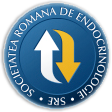
- Login
- Register
- Home/Current Issue
- About the journal
- Editorial board
- Online submission
- Instructions for authors
- Subscriptions
- Foundation Acta Endocrinologica
- Archive
- Contact
 Romanian Academy
Romanian Academy
 The Publishing House of the Romanian Academy
The Publishing House of the Romanian Academy

ACTA ENDOCRINOLOGICA (BUC)
The International Journal of Romanian Society of Endocrinology / Registered in 1938in Web of Science Master Journal List
Acta Endocrinologica(Bucharest) is live in PubMed Central
Journal Impact Factor - click here.

-
Endocrine Care
Ozer OF, Kacar O, Demirci O, Eren YS, Bilsel AS
Plasma Concentrations and Correlations of Natriuretic Peptides and Oxytocin During Labor and Early Postpartum PeriodActa Endo (Buc) 2017 13(1): 65-71 doi: 10.4183/aeb.2017.65
AbstractContext. Natriuretic peptides (NP) and oxytocin (OT) play an important role in cardiovascular and hydroelectrolytic homeostasis. Changes in NP levels and their roles in cardiovascular adaptations in pregnancy and labor have not been clear. Objective. The present study aimed to investigate the changes and correlations in plasma levels of atrial natriuretic peptide (ANP), C-type natriuretic peptide (CNP), B-type natriuretic peptide (BNP) and OT during labor and the postpartum period. Study design. Blood samples were collected from 29 healthy pregnant women in the active phase of spontaneous labor, 15 minutes after delivery and 3 hours postpartum. Plasma levels of OT and the stable N-terminal fragments of NPs (NT-proANP, NT-proCNP, NT-proBNP) were measured using enzyme or electrochemiluminescence immunoassays. Results. The plasma levels of NT-proANP and NTproCNP significantly decrease 3 hours postpartum compared to the active phase of labor and to 15 minutes after delivery. The plasma NT-proBNP levels significantly higher after delivery and 3 hours postpartum compared to the active phase of labor. A significant correlation exists between OT and NTproANP levels during the active phase of labor and 15 minutes after delivery. Conclusions. The data show that during labor and postpartum, the plasma concentrations of the NPs change differently. Elevations in NT- proBNP after delivery suggest that BNP may be involved in postpartum adaptations. The correlations between OT and ANP levels indicate that OT may be partly responsible for the increased levels of ANP and may have a role in the modification of the cardiovascular system. -
Endocrine Care
Oros S, Ianas O, Vladoiu S, Giurcaneanu M, Ionescu L, Neacsu E, Voicu G, Stoiceanu M, RoscaR, Neamtu C, Badiu C, Dumitrache C
Does Obesity Protect Postmenopausal Women Against Osteoporosis?Acta Endo (Buc) 2012 8(1): 67-76 doi: 10.4183/aeb.2012.67
AbstractIntroduction. Obesity was considered to protect against osteoporosis. Recent studies indicate the opposite.\r\nThe study aimed to see if adipose tissue has a protective effect on bone mass and if adipocytokines can explain the\r\nrelationship between obesity and osteoporosis.\r\nSubjects and methods We designed a study enrolling 83\r\npostmenopausal women, aged over 60, without diagnosed or treated osteoporosis and no secondary osteoporosis. We formed 3 groups- group 1- osteoporosis and metabolic syndrome (MetSyn), group 2- osteoporosis, group 3- MetSyn.\r\nWe evaluated the hematological, biochemical profile, bone turnover markers and adipocytokines. DXA of the spine and\r\nthe hip (left) was performed on all the enrolled women. Insulin resistance was appreciated using HOMA index. Metsyn\r\nwas defined using the International Diabetes Federation?s criteria.Results were statistically analyzed using SPSS program, version 15.\r\nResults. All groups were vitamin D insufficient with lower vitamin D, osteocalcin and adiponectin levels in the\r\ngroups with MetSyn and higher leptin levels. BMI correlated positively with spine BMD, while leptin correlated positively with hip BMD, pointing out to the protective effect of obesity against osteoporosis due to leptin?s involvement.\r\nConclusion. Obesity seems to have a protective effect against osteoporosis, probably due to leptin. -
Endocrine Care
Haghpanah S, Pishdad P, Zarei T, Shahsavani A, Amirmoezi F, Ilkhanipoor H, Safaei S, Setoodegan F, De Sanctis V, Karimi M
Frequency of Thyroid Nodules in Patients with ?-Thalassemias in Southern IranActa Endo (Buc) 2020 16(1): 68-73 doi: 10.4183/aeb.2020.68
AbstractBackground. Although thyroid nodules are a common finding in the general population, determining the clinically important nodules is essential. We investigated thyroid nodules or cysts by thyroid ultrasonography (US) in patients with β-thalassemia major (β-TM) and intermedia (β- TI). We also report a β-TI patient who was diagnosed with thyroid cancer six months before our screening. Methods. In this cross-sectional study, 178 patients with β-thalassemias referred to the Thalassemia Clinic in a tertiary hospital affiliated to Shiraz University of Medical Sciences were investigated, from January to June 2016, by US. Results. Thyroid nodules or cysts were detected in 11 patients [total: 6.17 %; 8 patients with β-TM (8.2%) and 3 patients with β-TI (3.7%)]. All nodules were < 1 cm in diameter and were not suspicious of malignancy. All patients, after 1 year of thyroid US follow-up, did not show any significant change in favor of malignancy. Conclusion. Based on our results, the frequency of thyroid nodules was similar to what was reported in the general population. However, a long-term follow-up of these patients is recommended because of the potential carcinogenic effects of iron and hepatitis C infection (HCV). To achieve more precise information, collaborative multicenter studies should be considered. -
Endocrine Care
Yadollahzadeh M, Shakeri S, Heydari I, Khajavi A, Hosseini Shirvani S, Sarkheyl E, Eskandari M, Farrokhpour M
Impact of Covid-19 on Thyroid Function: Evidence from IranActa Endo (Buc) 2023 19(1): 68-72 doi: 10.4183/aeb.2023.68
AbstractContext. We assessed the association between the severity of COVID-19 and the thyroid function, and the relationship of thyroid hormones with inflammatory markers in COVID-19 patients. Subjects and methods. This observational study contained 95 COVID-19 patients. The covariates of interest included the thyroid-stimulating hormone (TSH) and the total form of thyroid hormones thyroxine and triiodothyronine. Furthermore, the inflammatory markers including C-reactive protein, erythrocyte sedimentation rate, lactate dehydrogenase (LDH), and lymphocyte were measured. To analyze the data, the t-test, the nonparametric test for comparing the medians, and the Spearman correlation were used. Results. The median (interquartile range) of ages was equal to 53 (41-66) years old, including 54 men (56.8 %). As the severity of COVID-19 progressed from moderate to severe, increasing, though non-significant, trends of thyroid dysfunction were observed, the most remarkable for TSH. The only significant association between thyroid hormones and inflammatory markers was a Spearman correlation of -0.28 between TSH and LDH. Moreover, a direct association was found between the severity of COVID-19 and the LDH levels (p-value<0.001). Conclusions. A direct relation between the severity of COVID-19 and the LDH level and a reverse association between the LDH level and the thyroid hormone, TSH was obtained. Key -
Endocrine Care
Matulevicius V, Urbanavicius V, Lukosevicius S, Banisauskaite I, Donielaite G, Galkine A
Importance of Dehydroepiandrosterone Sulfate Assessment with Special Attention for Adrenal Tumours and Arterial HypertensionActa Endo (Buc) 2021 17(1): 68-76 doi: 10.4183/aeb.2021.68
AbstractObjective. To investigate the significance of DHEAS assessment in males of different ages. Methods. Retrospective cohort study of patients investigated in two large academic centres. Results. The data of DHEAS assessment of 3533 patients (3013 females and 520 males) was analysed. DHEAS was 1.6 – 13.5 times more frequently investigated in women than in men. A peak of DHEAS evaluation test for women was at 25 years old and distribution was uniform in males over decades, excepting being lower in 0-9 and 75+ages. In the age group 10-24 years, DHEAS levels were higher in females. After 45 years, DHEAS was higher in men than in women. Analysis of 510 case records showed low DHEAS levels in boys (0-9 years) and in men aged 65 – 84+. Higher DHEAS levels were detected as a peak at 30 years old, but never after 55 years. In individuals with low DHEAS levels prevailed congenital adrenal hyperplasia (32%), adrenal tumours (30%) and primary or secondary adrenal insufficiency (19%). High DHEAS levels prevailed in patients with arterial hypertension (26%), overweightobesity -(19%), non-toxic goiter (17%) and alopecia (9%). In the normal DHEAS miscellaneous diagnoses were met most frequently – 40%. Disorders exceeding 5% were non-toxic goiter (19%), adrenal tumours – 17%, overweight/obesity – 16% and arterial hypertension– 8%. In 71 women and 124 men adrenal neoplasms were detected. Higher frequency of these was observed in women in their 30s. A peak of adrenal neoplasms in men was at their 70s. This gender difference was not conditioned by earlier attempts to seek medical care by women. A significant correlation of DHEAS, weight, body mass index and systolic blood pressure with diastolic blood pressure was found. Conclusion. Our study permits to determine which DHEAS secretion and clinical pattern might be associated in males of different ages. -
Endocrine Care
Voinescu B, Vesa S, Coogan A
Self-Reported Diurnal Preference and Sleep Disturbance in Type 2 Diabetes MellitusActa Endo (Buc) 2011 7(1): 69-82 doi: 10.4183/aeb.2011.69
AbstractBackground. Previous sleep studies suggest that type 2 diabetes mellitus is associated with poor quality of sleep and sleep disorders. Aim. To evaluate sleep parameters and diurnal preference in type 2 diabetic patients, using a questionnaire. Methods. Ninety seven patients (aged 55.8±8.3, sex ratio 1:1), previously diagnosed with type 2 diabetes mellitus, together with 102 controls (aged 47.1±10.5, sex ratio 1:1), without diabetes, completed a questionnaire containing the Romanian translation of the Composite Scale of Morningness, the Sleep Disorders Questionnaire, the Pittsburgh Sleep Quality Index, the Pittsburgh Insomnia Rating Scale, the Multidimensional Fatigue Inventory, the Epworth Sleepiness Scale, the Alcohol Use Disorders Identification Test and the Beck Depression Inventory II (BDI). The study was cross-sectional, as we included subjects from outpatient and inpatient facilities. The recruitment process was based on handing invitation letters to patients consulting their physician, as well as to their acquaintances, using the snowball sampling. Participation was voluntary and anonymous. Results. Insomnia was more often reported in diabetic patients: 32 (33.0%) vs. 16 (15.7%) controls, a difference that was highly significant (P<0.001). Diabetic patients used to wake up at approximately the same hour as controls did; nevertheless they went to bed earlier (22:14 ± 0:57 vs. 22:32 ± 1:03), needed more minutes to fall asleep (28.84 ± 21.01 vs. 24.32 ± 23.45) and slept less than controls (7.01 ± 1.56 vs. 7.23 ± 1.18). Statistically significant differences between patients and controls were found regarding the Pittsburgh Sleep Quality Index (P=0.005), the Pittsburgh Insomnia Rating Scale (P<0.001) and the Multidimensional Fatigue Inventory (P=0.001) scores. Eighteen (18.5%) patients also met the criteria for a depressive disorder. No significant differences between patients and controls were found as related to their chronotype (P=0.32) Conclusion. Poor sleep, but not diurnal preference, was linked with the presence of type 2 diabetes mellitus. -
Editorial
Dumitrescu AM, Refetoff S
The presentation of a novel syndrome caused by mutations in the X-linked thyroid hormone transporter, MCT8Acta Endo (Buc) 2007 3(1): 69-80 doi: 10.4183/aeb.2007.69
-
Endocrine Care
Samani SM, Ghasemi H, Rezaei Bookani K , Shokouhi B
Serum Nesfatin-1 Level in Healthy Subjects with Weight-Related Abnormalities and Newly Diagnosed Patients with Type 2 Diabetes Mellitus; a Case-Control StudyActa Endo (Buc) 2019 15(1): 69-73 doi: 10.4183/aeb.2019.69
AbstractContext. Nesfatin-1 is a novel peptide with both central and peripheral anorexigenic regulatory properties. Besides its effects on food intake, few studies have suggested a possible role for this peptide in the pathogenesis of diabetes mellitus type 2. Objective. To compare serum levels of nesfatin-1 between healthy, normal-weight persons and three groups including healthy underweight, healthy obese and diabetic subjects. Design. Prospective, case-control study, performed between January 2015 and January 2016. Subjects and Methods. Fasting levels in serum nesfatin-1 were measured in 30 healthy, normal-weight individuals (controls), 30 healthy underweight persons, 30 healthy obese persons, and 30 patients with newly diagnosed diabetes type 2 using standard enzyme-linked immunosorbent assay (ELISA) kits. Results. The mean serum nesfatin-1 level was significantly higher in controls (2.61 ng/mL) compared to that in obese (1.13 ng/mL) and diabetic (0.99 ng/mL) patients; and significantly lower than that in the underweight group (3.50 ng/mL). The obese and diabetic groups were comparable in this regard. No significant association was found between serum nesfatin-1 level and age, sex, or body mass index. Conclusions. Serum nesfatin-1 is possibly associated with weight-related abnormalities in otherwise healthy subjects and diabetes type 2. Obesity and diabetes type 2 may share a common pathologic point in this regard. -
Endocrine Care
Manafi M, Khadem-Ansari MH
Gestational Diabetes Mellitus in Iranian Women: a rising rateActa Endo (Buc) 2013 9(1): 71-78 doi: 10.4183/aeb.2013.71
AbstractContext: rising incidence of Gestational diabetes mellitus (GDM) has been reported in the recent years and it has become an important public health problem, mainly among women aged 35-39 years. Objectives: Frequency of GDM in the females who are living in the northwest of Iran was evaluated. Subjects and Methods: two hundred and fifty pregnant women at 24-28th weeks of gestation were screened using 50 g oral glucose challenge test (OGCT), and the subjects with blood sugar levels equal or greater than 130 mg/dl were referred to diagnostic 100 g oral glucose tolerance test (OGTT). GDM was diagnosed according to Carpenter and Coustan criteria. Results: eighty six women (34.4%) with positive result of screening test were selected for subsequent OGTT with 100 g oral glucose. GDM was diagnosed in twenty four women (9.6 %) with at least 2 abnormal values. Frequency of GDM in the older subjects or the subjects with high pre-pregnancy or 24-28th weeks’ body mass index(BMI) were significantly higher than younger pregnant females or the subjects with low BMI. Conclusion: Prevalence of GDM in the current study was 11.9%, which is higher than earlier reports and implicates that the prevalence of gestational diabetes mellitus has markedly been increasing in Iran and associated with maternal age and body mass index. -
Case Report
Tastekin E, Can N, Ayturk S, Celik M, Ustun F, Guldiken S, Sezer A, Celik H, Koten M
Clinically Undetectable Occult Thyroid Papillary Carcinoma Presenting with Cervical Lymph Node MetastasisActa Endo (Buc) 2016 12(1): 72-76 doi: 10.4183/aeb.2016.72
AbstractBackground. Occult papillary thyroid carcinoma presented as isolated cervical lymphadenopathy without clinical and radiologic findings has been rarely reported. Case report. A 47 years old female patient admitted to otorhinolaryngology clinic with 4X3 cm sized cervical mass. Physical examination of the patient was noted as a nontender, firm, mobile lymph node at right lateral cervical region. There was no inflammatory or infection disease in the history of patients anamnesis and no abnormal value on laboratory tests. Ultrasound screening of the neck detected a lymph node with suspicious features for malignancy. Head and neck examination was normal and there is no evidence of a tumoral mass or nodule in the thyroid gland. Whole body scan of MRI showed no pathologic sign both in the neck and body. Excisional biopsy was performed and revealed a carcinoma with papillary morphology. Immunohistochemical staining features of the tumor confirmed a papillary carcinoma derived from the thyroid gland. Second look USG of the neck and thyroid was performed but it revealed no tumoral mass. The patient underwent total thyroidectomy with right functional and central lymph node dissection. Histological examination of the thyroid gland showed multicentric 2 mm sized, three foci of papillary carcinoma located in bilateral thyroid lobes and metastatic lymph nodes in the right side of the neck. Conclusion. A metastatic cervical lymph node can be evidence of a clinically undetected occult papillary thyroid carcinoma. Specific immunohistochemistry staining of specimen may lead to appropriate surgery and progression of carcinoma may be hindered by application of additional RAI therapy.